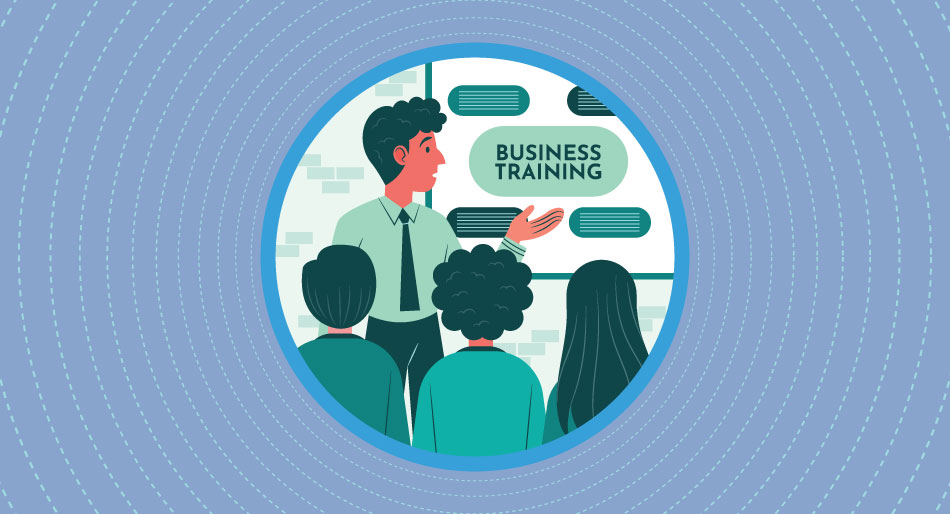
Future of Employee Benefits: Innovations in Training and Development Programs

As the workplace landscape continues to evolve, so do the expectations and needs of employees. In today's competitive market, organizations are recognizing the value of investing in their workforce through comprehensive training and development programs . This blog explores the future of employee benefits, focusing on the innovative approaches and strategies shaping training and development initiatives.
- Personalized Learning Paths:
- Gamification and Microlearning:
- Virtual Reality (VR) and Augmented Reality (AR):
- Continuous Feedback and Performance Coaching:
- Soft Skills Development:
- Mentoring and Peer Learning:
- Emphasis on Well-being and Work-Life Balance:
- Data-Driven Decision Making:
One-size-fits-all training programs are becoming a thing of the past. The future of employee benefits lies in personalized learning paths tailored to individual employees' needs and aspirations. Through technology-enabled platforms and data analytics, organizations can assess employees' skills, interests, and career goals to create customized training experiences. This approach enhances employee engagement, accelerates skill development, and fosters a culture of continuous learning.
Contact now - Best Mental health Services in India
Traditional training methods often struggle to capture employees' attention and maintain their interest. However, gamification and microlearning offer exciting solutions. Gamification incorporates game-like elements, such as challenges, rewards, and leaderboards, into training programs. This approach boosts engagement, motivation, and knowledge retention. Microlearning breaks down training content into bite-sized, easily digestible modules that employees can access on-demand. This trend supports just-in-time learning and accommodates employees' busy schedules.
Advancements in virtual reality and augmented reality technologies are revolutionizing employee training experiences. VR creates immersive simulations that allow employees to practice real-world scenarios in a safe and controlled environment. AR overlays digital information onto the physical world, providing interactive guidance and real-time feedback. These technologies enhance training effectiveness, particularly in fields such as healthcare, manufacturing, and customer service, where hands-on experience is critical.
Annual performance reviews are gradually being replaced by continuous feedback and coaching models. Real-time feedback enables employees to receive timely insights on their performance, identify areas for improvement, and make adjustments accordingly. Additionally, performance coaching focuses on developing employees' strengths, providing ongoing support, and aligning individual goals with organizational objectives. These approaches foster a culture of growth, engagement, and accountability.
Read Now - Mental Health Survey 2023
In addition to technical competencies, soft skills are increasingly valued in the workplace. Future training and development programs will place a greater emphasis on nurturing skills such as communication, collaboration, emotional intelligence, and leadership. Organizations recognize that these skills are essential for driving innovation, building strong teams, and adapting to changing market dynamics. Interactive workshops, simulations, and coaching will be utilized to cultivate these critical abilities.
Mentoring and peer learning programs have proven to be valuable tools for employee development. In the future, organizations will prioritize creating formal mentoring programs that connect experienced employees with those seeking guidance and support. Peer learning initiatives, such as cross-functional collaboration, knowledge-sharing communities, and mentorship circles, will further enhance learning opportunities. These programs encourage the exchange of diverse perspectives, promote knowledge transfer, and foster a culture of continuous improvement.
Learn now - How to Improve Your Sleep and Boost Your Mental Health Tips and Strategies for a Better Night's Rest
Employee well-being is increasingly recognized as a key driver of productivity and engagement. Future training and development programs will integrate well-being initiatives, such as mindfulness training, stress management, and resilience building. Organizations will prioritize work-life balance by offering flexible training options, remote learning opportunities, and resources for maintaining physical and mental well-being. These efforts create a positive work environment, enhance employee satisfaction, and contribute to talent retention.
Data analytics and artificial intelligence are transforming the way organizations design and evaluate training programs. By harnessing data, organizations can identify skill gaps, assess training effectiveness, and align development programs with business goals.
image credit : freepik

Anhedonia Treatment: The Most Effective Treatments for Anhedonia
Understanding Chronic Anhedonia - What It Is, Why It Happens, and How You Can Overcome It

